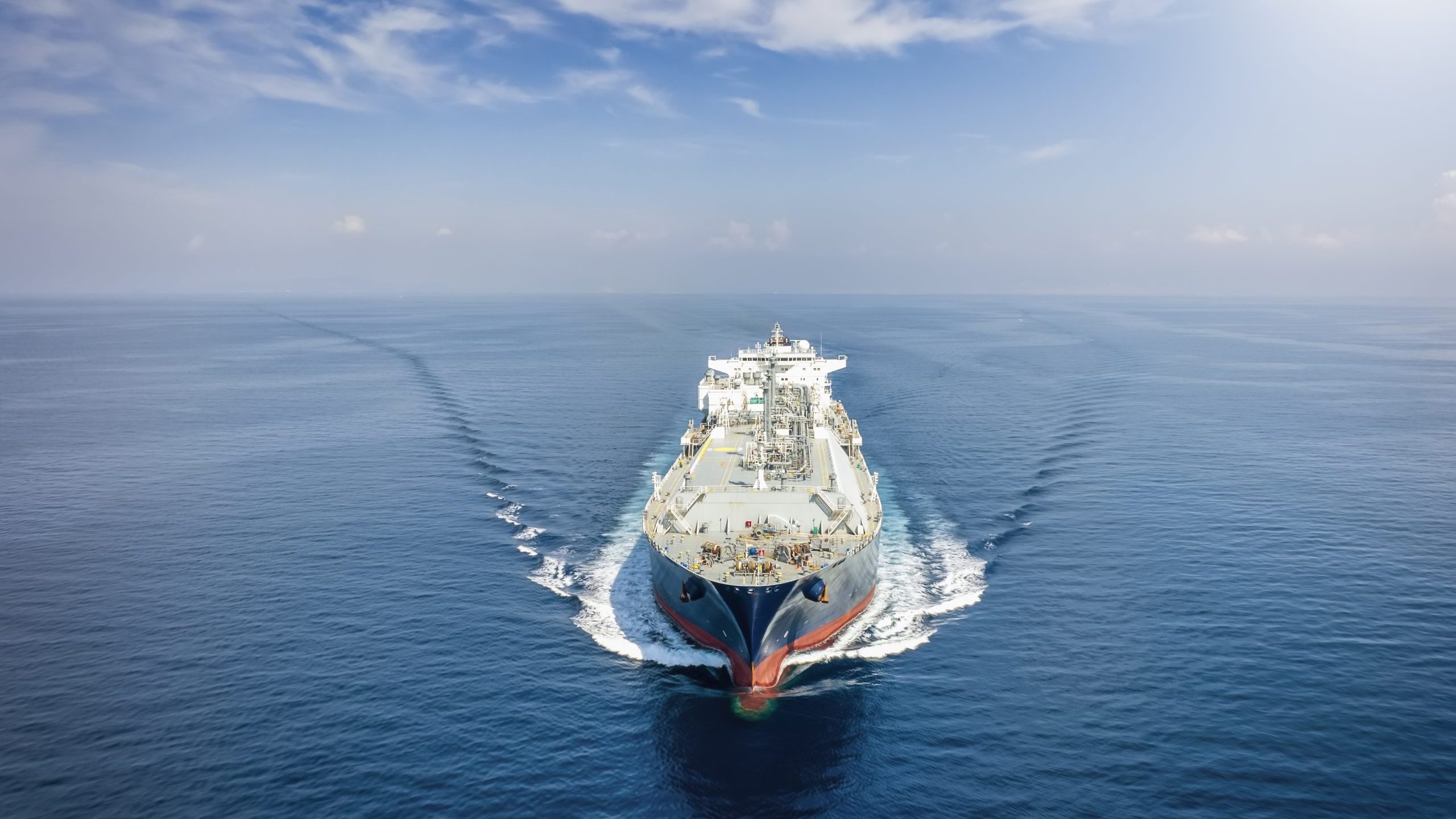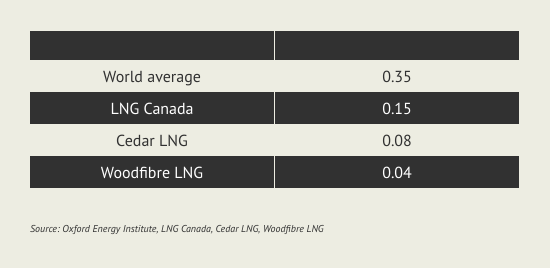As the world’s energy requirements grow along with the need to reduce emissions, natural gas is no longer viewed as just a “bridge fuel” to the future.
To keep energy reliable, secure and affordable, it is part of the destination.
Starting this summer, Canada will deliver liquefied natural gas (LNG) globally on ocean vessels.
LNG from Canada has a significant advantage—it has a smaller environmental footprint. But why?
Leading Emissions Per Tonne
The global average emissions intensity of LNG is 0.35 per cent CO2 per tonne, according to Oxford Energy Institute.
The LNG Canada project, set to ship its first cargo within weeks, is designed to have less than half the emissions intensity, at 0.15 per cent CO2 per tonne.
Two projects that are under construction, Cedar LNG and Woodfibre LNG, are expected to have emissions intensity of 0.08 per cent and 0.04 per cent, respectively.
There are four key reasons why Canada has the advantage.
1. Colder climate
LNG is produced by supercooling natural gas to around minus 162 degrees Celsius. In colder climates, this process typically requires less equipment and effort, saving energy and reducing emissions, according to researchers from the Universities of Calgary and Toronto.
For example, the average temperature in Kitimat, B.C. is much cooler (7°C) than the U.S. Gulf Coast (e.g.: 22°C in Corpus Christi, Texas).
2. Shorter shipping distances
West Coast LNG projects in Canada are about 10 shipping days from Asia, compared to 20 days for shipments from the U.S. Gulf Coast that transit the Panama Canal, according to Natural Resources Canada.
Proposed projects in Eastern Canada are 6 to 8 shipping days from Europe, the shortest distance of any North American LNG projects, NRCan says.
Less time for LNG tankers in the water means less fuel use and lower emissions.
3. Use of hydroelectricity
More than half of Canada’s electricity comes from hydropower, helping reduce emissions from the country’s power grid, according to the Canada Energy Regulator.
LNG projects are expected to connect to the grid to use hydroelectricity to fuel either part or all of their operations, particularly as the new Site C project in B.C. comes online and makes more hydropower available.
4. Methane emissions reduction
Canada’s oil and gas producers are achieving success in reducing methane emissions.
In Alberta, producers met the target of reducing methane emissions by 45% below 2014 levels three years ahead of schedule in 2022—and surpassed it in 2023 with a 52% reduction.
In B.C., producers achieved a 51 per cent reduction over the same period.
Regulators in Washington state affirmed this leadership when the permit for the Tacoma LNG project required sourcing natural gas specifically from British Columbia or Alberta.
The Puget Sound Clean Air Agency determined that Canadian natural gas had a lower environmental impact than U.S. gas, noting in 2019 that methane emissions in the U.S. “may be as much as five times higher than those from Canada.”
The unaltered reproduction of this content is free of charge with attribution to Canadian Energy Centre Ltd.

